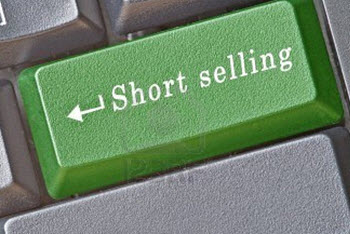Using leverage when trading
If you start trading online, you might be offered leverage by your broker. In essence, this means that you borrow money from you broker to make trades. It gives you more capital to invest, but it also means that you can end up owing your broker a lot of money.
 If you deposit $100 into your trading account and then buy shares for $100, you will not lose more than $100 even if the stock company files for bankruptcy and the shares become completely worthless. If you start using leverage, the situation changes. You deposit $100 into your trading account and then borrow $1,000 from your broker. You buy shares for $1,100. If the shares become worthless, you lose you $100 and you end up owing the broker $1,000 that must be repaid.
If you deposit $100 into your trading account and then buy shares for $100, you will not lose more than $100 even if the stock company files for bankruptcy and the shares become completely worthless. If you start using leverage, the situation changes. You deposit $100 into your trading account and then borrow $1,000 from your broker. You buy shares for $1,100. If the shares become worthless, you lose you $100 and you end up owing the broker $1,000 that must be repaid.
Using leverage is popular since it makes it possible to profit from really small price changes and without having to deposit a lot of money into the trading account. If you make a 1% profit on $100 you gain $1. If you make a 1% profit on $100,000 you gain $1,000. The Forex trade is a well-known example, where some traders manage to make huge profits from minuscule changes in currency exchange rates.
Before using leverage, always check the exact conditions. What costs are associated with using leverage? Will the broker put in automatic stop-loss points? How much can the market price of the asset drop below your purchase price before you will be required by the broker to either sell (at a loss) or put more money into your account (as collateral for the broker)? Can you really afford to lose the full amount of money risked? These are just a few examples of questions that ought to be answered before using leverage.
Selling short
Selling short is another example of a risky trading method where you risk losing more money than you deposited into your trading account. Selling short is a way to make money in falling markets. It is considerably more risky than simply buying an asset and hoping for it to increase in value.
The difference between a long position and a short position
If you go long in cotton, you are buying cotton with the expectation that it will increase in value. You hold a long position in cotton. Your goal is to one day sell the cotton and realize a profit. Going long is the most common method of making money in the commodity market. You can go long by buying actual physical cotton, but it is also possible to go long by buying cotton options and other cotton derivatives. Buying shares in a cotton producing stock company is another example of how you can hold a long position.
 Going long in cotton makes sense if you believe that the cotton prize will increase. But how can you profit if you have good reasons to believe that the cotton prize will decrease? The answer is to go short in cotton. When you go short, you borrow an asset and sell it, receiving payment right away. When it is time to return the asset to the lender, you buy the asset from a third party in order to give it back to the lender. If the price you received when you sold the borrowed asset was higher than the price you paid to buy back the asset, you have made a profit. (Barring transaction costs.)
Going long in cotton makes sense if you believe that the cotton prize will increase. But how can you profit if you have good reasons to believe that the cotton prize will decrease? The answer is to go short in cotton. When you go short, you borrow an asset and sell it, receiving payment right away. When it is time to return the asset to the lender, you buy the asset from a third party in order to give it back to the lender. If the price you received when you sold the borrowed asset was higher than the price you paid to buy back the asset, you have made a profit. (Barring transaction costs.)
Risks and rewards
When selling short (holding a short position), the possible gain is known while the possible loss is virtually endless.
Example #1: You borrow 1 bale of cotton when the market price is 20,000 USD per bale.
You sell it for 20,000 USD.
Three months later, it is time for you to return the cotton to the lender. The cotton price has dropped, and you manage to buy 1 bale of cotton for 15,000 USD to give to the lender. Barring transaction costs, you have made a $5,000 profit.
You knew in advance that you could never make a bigger profit than 20,000 USD. If cotton had become completely worthless, you would have made a 20,000 USD profit, barring transaction costs.
Example #2:
You borrow 1 bale of cotton when the market price is 20,000 USD per bale.
You sell it for 20,000 USD.
Three months later, it is time for you to return the cotton to the lender. The cotton price has increased, and you fail to find any cheaper cotton than 32,000 USD per bale.
You purchase 1 bale and give it to the lender. Barring transaction costs, you have made a 12,000 USD loss.
Still, it could have been even worse. If the cotton price had been 50,000 USD per bale you would have lost 30,000 USD. If the cotton price would have been 100,000 USD per bale you would have lost 80,000 USD. And so on. In theory, there is no limit for how high the cotton price can go. Consequently, there is no limit for how large a loss you can end up with.
This article was last updated on: June 19, 2017
